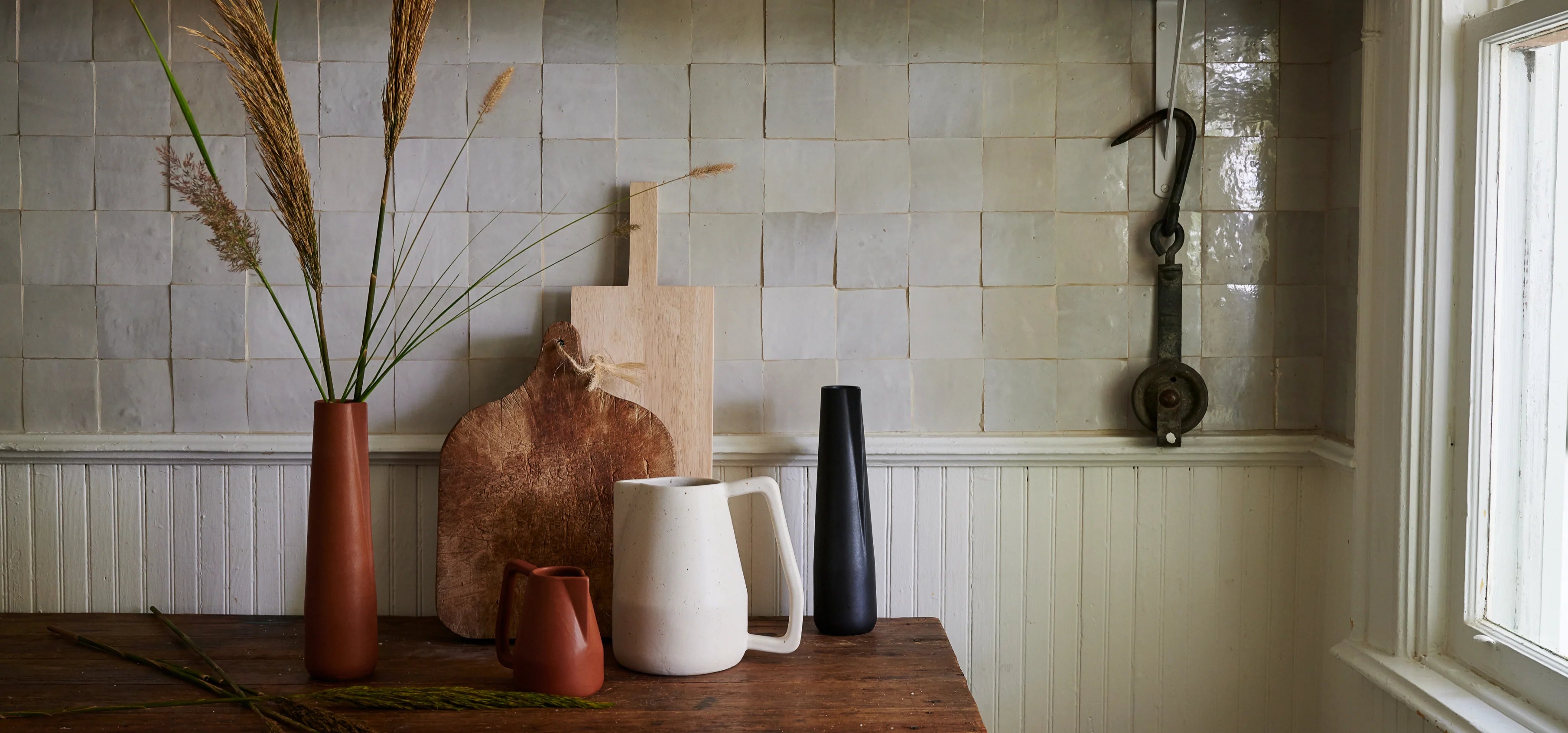Gifting has never been easier
Perfect if you're short on time or are unable to deliver your gift yourself. Enter your message and select when to send it.
Story by Diana Keeler / Photography by Troy House / Styled by Ayesha Patel

– Ayesha Patel
This season, Bloomist had the good fortune to collaborate with creative consultant and prop stylist Ayesha Patel. “Bloomist has a beautiful range of products — including the pitchers we curated together — and we chose a lovely historic location for the photoshoot,” Patel says. “It was exciting to have endless still-life possibilities, choosing on the spur of the moment what to group together and where to place it. What a treat!"

Included within the shoot were pitchers created by craftsmen in New Delhi, working as part of the SYZYGY collective. Pitchers figure favorably among Patel’s favorite pieces: “I love the combination of form and function that they represent, and the fact that they can be of so many shapes: clean and modern with straight sides, or fat and full bellied, big spout or little beak, handled or not, embellished and ostentatious or puritan-plain,” she says. “I love them all. There’s something innately beautiful in the function of pouring, offering, nourishing which they will do no matter how you use them — at your table for drinks, to water your plants, or to hold flowers in your home.”
Photo by Gentl + Hyers

“Inspired by still life paintings of Giorgio Morandi, an array of beautiful varied shapes and hues may be admired for inherent form. No flowers required.”
An alumnus of Martha Stewart Living Magazine, Patel didn’t grow up dreaming of becoming one of America’s foremost prop stylists. She thought, perhaps, of a career in science. “To be honest, I never dwelled much on what I was going to be,” she says now, with a laugh. “I was going to study biology.” Instead, she left her native India to study fine art — first in London, then in Philadelphia, where she was originally a printmaking major. “In my junior year I started making — for lack of a better word — ‘assemblages,’ these boxes full of stuff,” she says. These dioramas functioned as studies in objects, and they typically included organic materials from the then-unfamiliar world around her: “mottled bosc pears, wafting maple helicopter seed pods, blush-hued buckwheat groats," she says.
These boxes later served as a sort of preparation for the art of prop styling — a career, she says now, “I didn’t even know existed.” After graduating, Patel took a job at a Philadelphia design store that stocked a highly curated collection of international design magazines. “I remember looking at them and thinking, Someone puts these things together [within an image] — and that's what I want to do,” she says. She launched a freelance styling business with a friend and picked up TV commercial gigs. Her first love, though, was print, and print meant New York City.
“I had a gut instinct for what I wanted to do — and I knew that if it didn't work out, I could wait tables,” she says. She moved to Manhattan, banking from one freelance gig to the next, until she started freelancing for Martha Stewart Living Magazine. "There was so much to learn from Martha, the art directors and the editors, with all their expertise on graphic design, photography, food, gardening, decorating and collecting,” Patel says. “It was truly exciting to be part of what was happening there — an invaluable, on-going education in American culture."

"From tiny creamers to tall forms perfect for supporting a long stem, pitchers are inherently useful. I use them to water plants, hold utensils and herbs in my kitchen. A small cluster holding pens, brushes and paperclips creates an instant still life at my desk. Here Eric Bonnin’s white pitchers, contrast with Syzygy’s terra-cotta and black while Bob Dinetz’s pistachio pitcher offsets the composition with a single magnolia branch."

A study in natural tones and textures as cultures mix seamlessly - here a wild autumnal wreath created by Heart & Soil Flowers from the Hudson Valley crowns a vintage chair holding a soft neatly-folded alpaca throw from Peru. The antique Chinese stool and brush lend scale and a sense the day’s work is done.

Black with green is always a stunning combination. Jikoku planters with chic charcoal wood bases mingle with pitchers and vases yet to be filled with branches and sprigs of the season. Varying shades of green from emerald foliage to celadon-toned eucalyptus and succulents bring a nuanced subtlety to a bold palette.
Patel’s next collaboration with Bloomist will be a textile collection rendered in khadi, the handspun fabric made famous by Mahatma Gandhi as a symbol of Indian enterprise and independence. For Patel, it’s a potent connection to her heritage as well as to a favorite aunt, whom she credits with instilling a love of textiles and vernacular handicrafts, vessels in particular. "She taught me to appreciate the hand of the artisan and all the nuances it imbues, an alternate perfection,” Patel says. “In my teens, I started collecting bowls of stone, earthenware and brass and loved wearing clothing made from handloom textiles including humble one-of-a- kind khadi pieces.
Her mentoring has had a lasting effect because today I can't pass up a beautiful bowl, textile or woven fiber baskets and brooms that I might find in markets anywhere in the world. I am drawn to the beauty of those less obvious, utilitarian objects made from natural materials.”
Your Shopping Cart is Empty
Browse our latest collection or check your saved favorites to add more items to your cart.






Manage your profile, track your orders, and enjoy a seamless shopping journey with us.